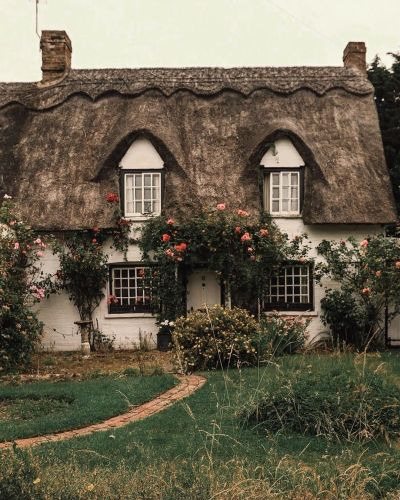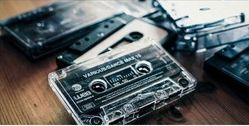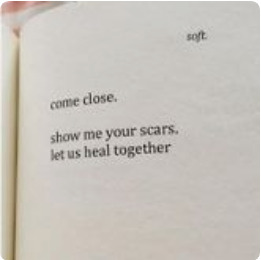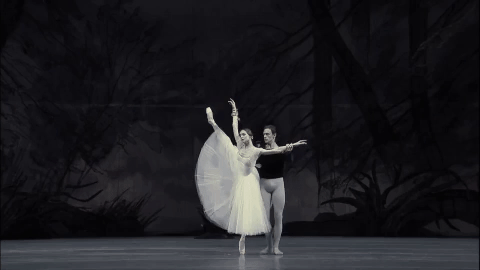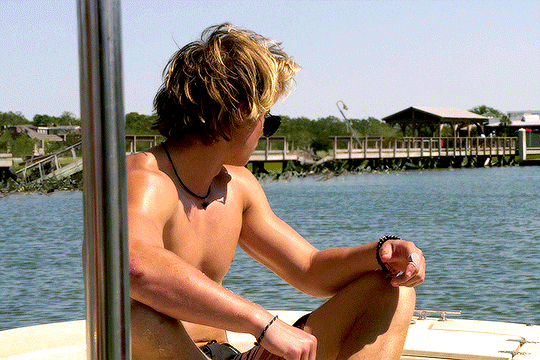Don't wanna be here? Send us removal request.
Text
In the days and weeks after childbirth, life and death have a way of blurring together - they seem closer than you’d think, not two opposed points on a continuum but two sides of the same locked door. You, the formerly pregnant person, are bleeding, you are wounded, you have been in agony, all of which makes death feel very present; meanwhile, a person who was not alive is now in the world, proof that the life force itself has been in you and passed through you, a giant winged shadow gliding along the surface of the world. Birth is a moment when you touch the hidden mechanisms of the universe. It’s a time when you work wonders.
‘Dead Blondes and Bad Mothers: Monstrosity, Patriarchy, and the Fear of Female Power’ - Sady Doyle
But this story is older than Shelley. It’s older than anything you can recognise, or remember; it’s a story about the beginning, from the beginning, one which predates time and the written word. We have come to the heart of it now: the unspeakable, otherworldly thing lurking inside of womanhood, the power that all these tales of female demons and deviants foreshadow. Birth is not just monstrous; it doesn’t belong in out hall of fame alongside the snake-wife and the possessed teenager. It is the reason for those other myths, the source of monstrosity itself.
‘Dead Blondes and Bad Mothers: Monstrosity, Patriarchy, and the Fear of Female Power’ - Sady Doyle
Deep in our culture’s imagination, in the sunless waters where our myths swim, the shape that moves through the darkness is female. The idea of a woman standing in the liminal point between life and death, ferrying us across the unknowable space between, has a primal power.
‘Dead Blondes and Bad Mothers: Monstrosity, Patriarchy, and the Fear of Female Power’ - Sady Doyle
And that power is monstrous. We may sentimentalise motherhood, or tell ourselves childbirth is “beautiful”, but our fears tell another story. The body of a pregnant woman - slimy, swollen, bleeding, leaking, teeming with other life - is the core repulsive image in patriarchal mythology. You can catch its warped, partial reflections in countless inhuman monstrosities, from the Alien franchise to Sumerian creation myths. That may not make actual pregnant women feel great; swollen joints and hormonal breakouts and distended abdominal muscles are hard enough without knowing that all of Western culture has deemed you inhumanly disgusting. But it may be some consolation to know that pregnant women’s bodies are horrific precisely because they confront men with the brute fact of female reproductive agency. To witness pregnancy and birth is to catch an unfiltered glimpse of a woman with power over life and death - power that men cannot take away.
Men have striven mightily to claim that power for themselves, with witch trials and medical schools and anti-abortion laws all intended to put reproduction back in male hands. Yet what goes on in that pregnant body can never be entirely governed by laws or mastered by technology. It can’t even be controlled by the pregnant person;
‘Dead Blondes and Bad Mothers: Monstrosity, Patriarchy, and the Fear of Female Power’ - Sady Doyle
Throughout history, millions have died in childbirth. In Renaissance Italy, the first thing a woman did after discovering she was pregnant was to write her own will. ... surviving childbirth, like every other kind of survival, is a privilege.
‘Dead Blondes and Bad Mothers: Monstrosity, Patriarchy, and the Fear of Female Power’ - Sady Doyle
So, no: giving birth is not “empowering”, in any facile girl-power, rah-rah way. But it is power - something only certain people can do, which is necessary to our collective survival. If women don’t give birth, the world ends - or humans do, anyway, which to us may as well be the same thing. It is not “empowering” for the Middle East to contain 82 percent of the world’s oil reserves - quite the opposite - but nations nevertheless rise and fall on the question of who controls that fuel. Every uterus is an oil well, a valuable and disputed resource, the object of a millennia-long turf war; if you happen to be sitting on one at the moment, don’t be surprised when invading forces show up to claim it out from under you.
Cisgender men fear that the territory they try to claim will rise up and resist them; that their strength will fail at the crucial moment, and power over reproduction - which is to say, power over humanity itself - will be wrested out of their hands. A pregnant woman is a woman who is finally, fully out of control. She is the face of horror.
‘Dead Blondes and Bad Mothers: Monstrosity, Patriarchy, and the Fear of Female Power’ - Sady Doyle
...violently paternal male gods who give commandments in good times and declare holy wars in bad ones. Nature may be generically female in this cosmology (we still talk about “Mother Nature”), but it is also depersonalised, soulless; it’s just dead matter (just dead mater, as in mater-ial and mater-nity; they come from the same root) that men are intended to control.
‘Dead Blondes and Bad Mothers: Monstrosity, Patriarchy, and the Fear of Female Power’ - Sady Doyle
Modern translations of the Bible have corrected “man” to “humankind”. But it’s too late; the image of Man, specifically, controlling the earth and every creeping or female thing on it, has been built into the foundations of the culture. We have no space in our imagination for a power greater than Man, no animate Nature or Mother to fight back.
‘Dead Blondes and Bad Mothers: Monstrosity, Patriarchy, and the Fear of Female Power’ - Sady Doyle
Instead of telling stories about the necessity to master or subjugate that older, female power, men tell stories in which it never existed.
‘Dead Blondes and Bad Mothers: Monstrosity, Patriarchy, and the Fear of Female Power’ - Sady Doyle
0 notes
Text
When we project all our anxieties about feminine sexual power onto real, marginalised women, we become a nation of Michael Cleary’s, shrieking about the harm done to us by “deceivers”, unable to see that the real threat is us - the people holding the lit match, pouring grease on the flames.
‘Dead Blondes and Bad Mothers: Monstrosity, Patriarchy, and the Fear of Female Power’ - Sady Doyle
Male sexual access to women is the bedrock of patriarchy. Unless cisgender men can get cisgender women to sleep with them, they cannot get them pregnant; unless they can guarantee those women are monogamous, they cannot be sure that the resulting children are theirs. Every story we tell about sexuality, every bit of dirtiness or shame we attach to it, is aimed at reinforcing that basic power dynamic: Men must be free to sleep with women, and women must not be free to sleep with men. Or with other women, or with anyone, except for the one lucky fellow who’s purchased the right to impregnate her. (This, admittedly, puts a very sinister spin on engagement ring commercials: a diamond is forever.) Female sexuality can exist only with male permission, in answer to male need, and in fact, female desire is so inherently subversive that it’s best to just pretend it doesn’t exist.
‘Dead Blondes and Bad Mothers: Monstrosity, Patriarchy, and the Fear of Female Power’ - Sady Doyle
Even sexually available, straight, cisgender women - home-wreckers and temptresses, sex workers and secretaries, girls who go wild and girls who cry rape - invite hatred and disgust. They’re free agents, women whose sexuality has not yet been put under a husband’s control and which still therefore carries the power to subvert or overthrow the established system.
The contempt and condescension polite society pours onto its sluts and spinsters disguises the primal emotion at the root of all misogyny: fear. And that fear is visited every day on women, who pay with their lives for having sexualities that elude patriarchal control.
‘Dead Blondes and Bad Mothers: Monstrosity, Patriarchy, and the Fear of Female Power’ - Sady Doyle
For every imaginary femme fatale using her sexuality as a weapon of male destruction, there is a real woman who’s been raped by a boyfriend or groped by her boss; for every heartless mermaid drowning her lover or deceptive siren luring him to crash on the rocks, there is a woman whose life has been stalled or limited or ended by a man. It’s easy to think you’ll be the mermaid; to identify with the fairy bride, who can forbid men to touch her or look at her, and forget the human wife, brutalised and tortured and burned for showing a forbidden glimmer of autonomy. But we are all more likely to be the rule than the exception. We are all more likely to be dead sluts than Final Girls.
‘Dead Blondes and Bad Mothers: Monstrosity, Patriarchy, and the Fear of Female Power’ - Sady Doyle
Stories about deceptive, frightening, all-powerful female sexuality were created to justify male violence. They cannot provide us with an escape from it. Genuine sexual freedom and power, for women, is as unimaginable as the surface of another planet. Maybe our descendants will set foot there. But we may never see its sunlight or breathe its air. Yes, there is a primal, feral, alien power in female sexuality before society arises to contain and control it. But that feral quality rarely survives for long. It is beaten out of us, or starved out, or simply hidden away so we can be the kind of women the world tells us are worth loving. For many of us, sexual freedom is only a stop on the way to our final destination: the great domestication, the marriage that is meant to be our happy ending and instead turns out to be our end.
‘Dead Blondes and Bad Mothers: Monstrosity, Patriarchy, and the Fear of Female Power’ - Sady Doyle
This turned out to be one of the worst decisions Scott ever made, and this was a man whose decision-making skills had already led him to infidelity, faked Eiffel Tower parties, and murder.
- - - - - -
Women who obsess over stories about killer husbands aren’t indulging in tabloid sensationalism or thinking in complicated psychosexual metaphors. They are, literally, worried that their husbands are going to kill them - and those fears are not irrational.
“Our trust in men is as unearned as it is unreciprocated - yet it’s expected,” writes feminist Chelsea G. Summers. “And this is where true crime’s real value lies: Unlike love songs, unlike rom-coms, and unlike romance novels, true crime has no interest in telling us to trust men. Unlike politicians or bosses, it doesn’t seek to gaslight women.”
‘Dead Blondes and Bad Mothers: Monstrosity, Patriarchy, and the Fear of Female Power’ - Sady Doyle
That war is long and bloody, and there is no chance of a ceasefire any time soon. If we had no way to talk about it, we might die of the silence alone.
‘Dead Blondes and Bad Mothers: Monstrosity, Patriarchy, and the Fear of Female Power’ - Sady Doyle
Girls and young women wolfed down Gothic novels, which provided a rare public forum through which women could discuss the day-to-day dangers they faced. No other genre was so focused on the evil men do to the women inter lives. The Gothic turned everyday family life inside out to produce anxiety nightmares of unnatural and illegitimate reproduction, child abuse, sexual perversion, and - most importantly - untrustworthy, violent husbands.
‘Dead Blondes and Bad Mothers: Monstrosity, Patriarchy, and the Fear of Female Power’ - Sady Doyle
Women are indoctrinated from birth to overlook or forgive men’s bad behaviour, especially when it comes to relationships.
‘Dead Blondes and Bad Mothers: Monstrosity, Patriarchy, and the Fear of Female Power’ - Sady Doyle
Its heroines exist in perpetual relation to male brutality, attempting to form meaningful relationships within it or around it or in spite of it.
‘Dead Blondes and Bad Mothers: Monstrosity, Patriarchy, and the Fear of Female Power’ - Sady Doyle
Browning “refused to travel without the toy bears he had had since childhood, whom he fondly called ‘the Boys’.”
Conservatives may weep and wail at our modern age of premarital cohabitation, but at least a contemporary woman has less chance of learning something like this after the wedding.
‘Dead Blondes and Bad Mothers: Monstrosity, Patriarchy, and the Fear of Female Power’ - Sady Doyle
...but realistically, in a society without easy divorces or pride parades, there was not much for unhappily married couples to do but sleep with other people.
‘Dead Blondes and Bad Mothers: Monstrosity, Patriarchy, and the Fear of Female Power’ - Sady Doyle
...where even the happiest marriage is a nightmare of cruelty and thwarted female needs.
‘Dead Blondes and Bad Mothers: Monstrosity, Patriarchy, and the Fear of Female Power’ - Sady Doyle
“’That’s right, my dear,’ I’d tell her, ‘no-one will put upon you. You were born into this world to take what you could out of it,’ and she did, she didn’t care, she wasn’t afraid.”
Rebecca - Daphne Du Maurier
The sea takes its dragons back in the end. Rebecca’s unrepentant sexuality - far too big for her marriage, for any one man, for any one gender, for the world - renders her a malevolent, almost supernatural force. She could never truly be anyone’s wife. She had to be killed, lest she profane the very concept of marriage.
“It’s people like me who have careers who really have bitched up the old relationship between men and women,” du Maurier wrote to her unrequited love, Ellen Doubleday. “Women out to be soft and gentle and dependant. Disembodied spirits like myself are all wrong.”
‘Dead Blondes and Bad Mothers: Monstrosity, Patriarchy, and the Fear of Female Power’ - Sady Doyle
...there is real power in her declaration that “I shall live as I please ... and the whole world won’t stop me.”
------
When we look at the woman who does behave like a good wife - the second Mrs. de Winter, soft and gentle and dependant, drab and mousy and victimised, clinging to her husband and making excuses for him while he describes how he, literally, got away with murder - we’re forced to wonder if wifeliness is really such a wonderful thing after all.
‘Dead Blondes and Bad Mothers: Monstrosity, Patriarchy, and the Fear of Female Power’ - Sady Doyle
We are not supposed to be worrying about these problems. We live in the post-housewife age, the age when marriage is less an institution than a perpetual camping trip with your favourite pal; same-sex marriage is the law of the land, cohabitation and living single are both valid options, no-fault divorce is available in all fifty states, and heterosexual marriage, if you do it at all, is supposed to be fun, This is the golden age of commitment, where everyone takes out the trash and the honeymoon lasts forever.
You wish. Despite the ever-sounding Klaxons of progress, the numbers just don’t add up.
‘Dead Blondes and Bad Mothers: Monstrosity, Patriarchy, and the Fear of Female Power’ - Sady Doyle
The increased presence of women in the workplace seems to have only aggravated men’s need for domestic control.
‘Dead Blondes and Bad Mothers: Monstrosity, Patriarchy, and the Fear of Female Power’ - Sady Doyle
Though it is no longer possible for contemporary women to be submissive, housebound Victorian brides, we are still expected to think like them. The financial and political realities of the twenty-first century are being tacked on to the gender roles and expectations of previous ages, leaving women struggling to accomplish contemporary goals while embodying Victorian ideals.
‘Dead Blondes and Bad Mothers: Monstrosity, Patriarchy, and the Fear of Female Power’ - Sady Doyle
We’re told marriage will make us good, or make us happy, or (given the constant contempt poured on spinsters) that marriage is an accomplishment, like getting into a good college, and we’ll be losers if we don’t qualify.
‘Dead Blondes and Bad Mothers: Monstrosity, Patriarchy, and the Fear of Female Power’ - Sady Doyle
Yet study after study shows that women simply don’t like being married to men - no matter how we romanticise or idealise the institution from the outside, no matter how lonely or insecure we may feel about not being picked, once we’re in, we’re banging on the walls demanding to be let out again.
‘Dead Blondes and Bad Mothers: Monstrosity, Patriarchy, and the Fear of Female Power’ - Sady Doyle
One 2017 study survey by the National Health Service found that women were unhappier than men all their lives, and especially unhappy in the prime marriage and child-rearing decades of their thirties, forties, and fifties - but that female happiness saw a sharp uptick once the women reached their mid-eighties, because by then, their husbands were dead.
‘Dead Blondes and Bad Mothers: Monstrosity, Patriarchy, and the Fear of Female Power’ - Sady Doyle
“Just as God has been pronounced dead quite often but has a sneaky way of resurrecting himself,” wrote second-wave feminist Shulamith Firestone, “so everyone debunks marriage but ends up married.”
------
Our attitudes have shifted, our expectations have shifted, but the institution itself remains largely unchanged. It would be crazy not to feel some frustration.
‘Dead Blondes and Bad Mothers: Monstrosity, Patriarchy, and the Fear of Female Power’ - Sady Doyle
He was not smart. He was not kind. He was not exceptional in anything but the sheer depth of his selfishness. Yet Laci Peterson had jumped through a thousand hoops to please him.
‘Dead Blondes and Bad Mothers: Monstrosity, Patriarchy, and the Fear of Female Power’ - Sady Doyle
She had died trying to measure up to a man who was beneath her.
---------
Of course women hated Scott. He was the living proof that they’d been sold a phony bill of goods, that the game of heterosexuality was not worth the candle. Not only was marriage not a ticket to happiness or fulfilment, it wasn’t even any safer than our other options: Laci could do everything right, or “right”, and still wind up a collection of half-rotten body parts floating around a bay.
‘Dead Blondes and Bad Mothers: Monstrosity, Patriarchy, and the Fear of Female Power’ - Sady Doyle
There’s a kind of justice in seeing these “good”, victimised girls come back to us in fiction as inconvenient, frightening, monstrous women.
‘Dead Blondes and Bad Mothers: Monstrosity, Patriarchy, and the Fear of Female Power’ - Sady Doyle
...as if all those thrown-away girls in the water were speaking to us, delivering their own eulogies.
‘Dead Blondes and Bad Mothers: Monstrosity, Patriarchy, and the Fear of Female Power’ - Sady Doyle
“Nick must be taught a lesson ... He’s never been taught a lesson! He glides through life with that charming-Nicky grin, his beloved-child entitlement, his fibs and shirking, his shortcomings and selfishness, and no one calls him on anything. I think this experience will make him a better person. Or at least a sorrier one. Fucker.”
Gone Girl - Gillian Flynn
If you’ve been through enough, the difference between making a man better and making him sorrier can be tough to figure out. In fact, it may not matter.
‘Dead Blondes and Bad Mothers: Monstrosity, Patriarchy, and the Fear of Female Power’ - Sady Doyle
That kind of rage bubbles underneath the surface of many “normal” marriages, and behind the smiles of many seemingly happy women.
‘Dead Blondes and Bad Mothers: Monstrosity, Patriarchy, and the Fear of Female Power’ - Sady Doyle
[It] gave women a way to vent their daily indignities and unspeakable anger safely and without consequence; let us have our wedding cake and poison it, too; it was an opportunity to save the wife and punish her husband for killing her at the same time.
‘Dead Blondes and Bad Mothers: Monstrosity, Patriarchy, and the Fear of Female Power’ - Sady Doyle
There’s more than one way to kill your wife. Beyond the spectacular violence of shootings and stranglings and wives thrown in rivers, there is the daily, grinding violence of subservience and loss of self - which, like those more visible attacks, is a built-in part of the system. To this day, women are expected to give up more of themselves in marriage than men are; to change our names, change our goals, to give up our homes or careers or autonomy or our very identities. Like the protagonist of Rebecca, we are still expected to be “Mrs. [Whoever]” and no one else. The stories contemporary women tell about marriage are documents of a fractured consciousness; torn between the complicated, thinking people they are and the wives they’re supposed to be, between the marriages they have and the capital-M Marriage that is still the cultural ideal. At the points where autonomy and personhood bump up against the edges of wifeliness, monsters arise.
‘Dead Blondes and Bad Mothers: Monstrosity, Patriarchy, and the Fear of Female Power’ - Sady Doyle
But those monsters are only reflections of a deeper powerlessness, impractical revenge fantasies against a system too huge and old and powerful for even the most monstrous woman to defeat. Despite all the work we’ve done to reform it, the bones of marriage are not romantic. As originally intended, a wife is just a woman who’s been brought under male control, and marriage is just the process by which men make wives out of women; an institution built, like Bluebeard’s bloody chamber, to make girls disappear.
‘Dead Blondes and Bad Mothers: Monstrosity, Patriarchy, and the Fear of Female Power’ - Sady Doyle
She is, now and forever, “the wife”. She has disappeared into the man who killed her, so completely that sheen longer has her own name.
‘Dead Blondes and Bad Mothers: Monstrosity, Patriarchy, and the Fear of Female Power’ - Sady Doyle
0 notes
Text
In the days leading up to her death, Michael’s neighbours recalled hearing screaming coming from his house - “take It, you [bitch], you old faggot, or we will burn you” was one widely reported comment - and seeing Bridget tied to the bed, where she was doused and force-fed potions to repel fairy magic. Sometimes that meant herbs boiled in milk. Sometimes it meant urine. Fairies hated iron, so she was threatened and prodded with a hot poker; fairies hated Christianity, so a priest was called. Bridget was made to recite her name and her male relatives’ names; she had to describe herself as “Bridget Boland, wife of Michael Cleary, in the name of God” over and over, as if the spell could be broken by reaffirming the proper marital relation. When she was slow to answer, they held her over the kitchen fire.
XXXXXXXXXXXXXXXXXXXXXXXXXXXXXXXXXXXXXXXXXXXXXXX
When she refused a third piece [of toast], Michael knocked Bridget to the ground and began forcing the bread down her throat. He began demanding that she call herself “the wife of Michael Cleary” again .... Michael then stripped his wife’s clothes off, except her chemise, and got a lighting stick out of the fire. She was lying on the floor and he held it near her mouth.
Fairies hated fire. So Michael held fire to his wife’s mouth, telling her to take back what she’d said. Some of the witnesses remembered her crying out for Johanna - “oh, Han, Han” - and Johanna remembered Bridget saying, “give me a chance,” but then her head hit the floor, hard, and she stopped talking. So it may have been the blow to the head that killed her. We can’t know. Somehow, in the struggle, a spark got loose, and Bridget’s chemise caught fire. Over the screaming of her assembled family, Michael reached for a lamp and poured the burning oil over Bridget’s body, stoking the flames.
-/-/-/-//-/-/-/-/--/
...given what we know about the other men, the obvious pride Bridget took in herself, and the financial power she wielded - say it plainly, the fact that Bridget was not under her husband’s control - it may have been a lie, and a way to justify killing her. Men kill women every day to assert their authority. Bridget wouldn’t have been the first.
-o-o-o-o-o-o-oo
“Fairy wives” behaved less like inexplicable creatures of the spirit world and more like women who’d figured out how to have long-term heterosexual relationships without ceding their dignity or autonomy. So if Michael Cleary had a wide who was more beautiful than ordinary women, who wielded more control than ordinary women, who acted “too fine” for him or anyone, who had a habit of disappearing - well, he knew what to call her. If tradition had taught him anything, it was that a woman who insisted too much on being treated like a person was probably not a person at all.
‘Dead Blondes and Bad Mothers: Monstrosity, Patriarchy, and the Fear of Female Power’ - Sady Doyle
Women’s adult sexuality - the kind that comes attached to female experience, agency, power in the world - is even more heavily demonised than the adolescent variety. An adolescent girl’s sexuality is frightening because it’s a way for her to slip out of her parents’ control. But once a girl slips her chain and becomes a woman, her sexuality stops being merely worrisome and becomes a threat. Sex is a valuable resource that men can never entirely alienate her from because it resides within her body.
‘Dead Blondes and Bad Mothers: Monstrosity, Patriarchy, and the Fear of Female Power’ - Sady Doyle
...humanity, for most of recorded history, has been defined as male. In the West, white men have told our stories, written our laws, made our definitions, dominated our arts and academies; when female experience has been accounted for at all, it has usually been a man doing the accounting. Women are defined from the outside, in terms of how they seem to men, rather than from the inside, as thinking, feeling subjects. They are not fellow people, not even a different or worse variety of people, but simply the opposite of men, and hence, the opposite of human.
‘Dead Blondes and Bad Mothers: Monstrosity, Patriarchy, and the Fear of Female Power’ - Sady Doyle
They seem beautiful and human at first glance, but when you examine them, their bodies are never quite right; they always bear some mark of the animal or the otherworldly. You can never fully understand these women, never fully pin them down, never love them; they are elusive, incomprehensible, practiced deceivers. You can live with one for years and still not see the snake that lives inside her skin.
‘Dead Blondes and Bad Mothers: Monstrosity, Patriarchy, and the Fear of Female Power’ - Sady Doyle
The twenty-first century, of course, does not really do swoons. We don’t really do fairies, either. We still have magical kidnappers, not-quite-human imposters, and inexplicable visitors from another world, but we call them aliens.
‘Dead Blondes and Bad Mothers: Monstrosity, Patriarchy, and the Fear of Female Power’ - Sady Doyle
-o-o-o-o-o-o-o
It is luxuriantly, gorgeously terrible.
-o-o-o-o-o
a psychic who does things like walk up to a gorily mutilated corpse and announce, using his psychic powers, “Something bad happened here!”
-0-0-0-0-0-0
Maybe you think I am exaggerating. Maybe it’s not actually that stupid. To which I reply: no. Whatever you are imagining, [movie] is much, much stupider than that.
-o-o-o-o-o-o-o-o
It is an artless, timeless, accidental blueprint of all the ways men fear female sexuality.
-o-o-o-o-
Yet Sil’s quest to fulfil every single female stereotype from a bad ‘90s stand-up routine is not really meant to amuse us. It’s meant to be terrifying. The fact that she’s feminine is what makes her monstrous - a Melusine whose dragon nature is always lurking just under the surface. Once a woman is free to desire and pursue her own desires, she moves beyond the reach of our empathy; she’s a threat that must be contained or destroyed.
‘Dead Blondes and Bad Mothers: Monstrosity, Patriarchy, and the Fear of Female Power’ - Sady Doyle
Plenty of these portrayals [of animal seductress women] hint at more commonly concealed desires, which are less cannibalistic than they are “not heterosexual” .... The fear of female sexual liberation has always been partly a fear that women will develop desires that don’t include men.
‘Dead Blondes and Bad Mothers: Monstrosity, Patriarchy, and the Fear of Female Power’ - Sady Doyle
But there is another group of marginalised women who bear the brunt of our fears nowadays - made to hold the bag for our ideas of deceptive femininity and killer shape-shifters. Transgender women have always existed. But in literature, they have seldom been anything other than monsters.
‘Dead Blondes and Bad Mothers: Monstrosity, Patriarchy, and the Fear of Female Power’ - Sady Doyle
Monsters can be beautiful; possessed of a certain archaic, queenly violence or a joyful Lucy Western indifference to convention, .
‘Dead Blondes and Bad Mothers: Monstrosity, Patriarchy, and the Fear of Female Power’ - Sady Doyle
[Elena] Rose calls monstrosity an ethos of “the cobbled-together, the sewn-up, the grafted-on ... the golden, the under-the-earth, the foreign, the travels-by-night; the filthy ship-sinking cave-dwelling bone-cracking gorgeousness that says hell no, I am not tidy. I am not easy.”
‘Dead Blondes and Bad Mothers: Monstrosity, Patriarchy, and the Fear of Female Power’ - Sady Doyle
4 notes
·
View notes
Text
Female sexuality was insatiable; if given free reign, women would seduce the Devil himself, and use their resulting satanic powers to enslave mortal men.
‘Dead Blondes and Bad Mothers: Monstrosity, Patriarchy, and the Fear of Female Power’ - Sady Doyle
Male and female children alike were supposedly traumatised for life by the knowledge that their mothers did not have penises, seeing the female body forever after as maimed and incomplete - a walking wound.
‘Dead Blondes and Bad Mothers: Monstrosity, Patriarchy, and the Fear of Female Power’ - Sady Doyle
Men define humanity, and women, insofar as they are not men, are not human. Thus, women must necessarily be put under male control. and to the extent that we resist this control, we are monstrous.
But a monster is not something to dismiss or look down on. A monster does not merely inspire anger or disgust. A monster, by definition, inspires fear. Beneath all the contempt men have poured on women through the ages, all the condemnations of our Otherness, there is an unwitting acknowledgement of our power - a power great enough, in their own estimation, to end the world.
‘Dead Blondes and Bad Mothers: Monstrosity, Patriarchy, and the Fear of Female Power’ - Sady Doyle
Historically, men have believed that women can destroy cities by having sex (as with Helen of Troy or the anonymous, libidinous mother of the Monster of Ravenna) or control the weather with their bodies (a witch could create a storm by letting down her hair; a woman could calm a hurricane by standing naked on the deck of a ship) .... It’s easy to roll your eyes at the tinfoil-hat talk, but male fear is serious: it kills women every day. We’ve all grown up with the image of some inconvenient female villager killed for “witchcraft”, her community’s misogynist paranoia wrapping around her throat like a noose. Just as with those long-ago panics, some of the men ... have murdered innocent women in the name of “defending” themselves from female power. The precise nature of the accusations might change, but men’s underlying distrust of women remains constant.
‘Dead Blondes and Bad Mothers: Monstrosity, Patriarchy, and the Fear of Female Power’ - Sady Doyle
Fear of women may be the single most important truth of misogyny. A cage, after all, has two purposes. Of course, it serves to keep women confined, hemmed in - to prevent us from going out into male territory and getting what men have, the jobs and money and respect and power that are so much more accessible if you’re male. But the second purpose of a cage - the more interesting one - is to protect the world from what is inside it. On some level, the cage exists to keep women from getting out.
‘Dead Blondes and Bad Mothers: Monstrosity, Patriarchy, and the Fear of Female Power’ - Sady Doyle
I want to understand what these men are afraid of. I want to know the beast they feel breathing down their necks in the dark. Ready to break through at last. Ready to eat them.
‘Dead Blondes and Bad Mothers: Monstrosity, Patriarchy, and the Fear of Female Power’ - Sady Doyle
‘I am, thank God, neither young nor cool anymore. I am also significantly less man-loving, having spent more time with men.’
‘Dead Blondes and Bad Mothers: Monstrosity, Patriarchy, and the Fear of Female Power’ - Sady Doyle
The promise of patriarchy is that every man will exercise absolute power and control over at least one woman, and that lucky men will exercise power and control over other men as well. ...... And the weakness of patriarchy - the big, red, “DO NOT TOUCH THIS BUTTON” button, the exhaust vent on the Death Star of Western civilisation - is women. If women as a whole - not some women, or a particular privileged class of women, but all of us, en masse - refuse to cede our sexual or personal autonomy, the whole thing falls apart.
‘Dead Blondes and Bad Mothers: Monstrosity, Patriarchy, and the Fear of Female Power’ - Sady Doyle
Fear of male violence is what reminds women that we are not people yet, and that men are still able to put tight limits on our lives.
‘Dead Blondes and Bad Mothers: Monstrosity, Patriarchy, and the Fear of Female Power’ - Sady Doyle
But all of that violence comes, on some level, from the knowledge that women are potentially formidable. Men fear women, even as they work to make women fear men, because, on the most basic level, male dominance is an illusion. For patriarchy to work, men have to control literally every facet of sex and family life - who has sex, with whom, and when and whether they get pregnant, who owns the child, and who cares for it - and given the untruly nature of sex and birth, this control is perpetually slipping out of their grasp. Patriarchy is inherently unsustainable: It is not possible to control another human being at every moment of every day. It is not possible to control what (or who) women want. It is not possible to own a resource that is located inside someone else’s body, which sex and reproduction always are. And if women realised how fragile male control is, everything might change.
‘Dead Blondes and Bad Mothers: Monstrosity, Patriarchy, and the Fear of Female Power’ - Sady Doyle
So, by constructing patriarchy, men make monsters: the twisted, slimy, devouring, mutating, massively powerful images of female desire and sexuality and motherhood that take place outside of patriarchy. Monsters are the children that aren’t supposed to exist, the feral desires we’ve fought to repress and forget, the outsiders waiting at the edge of our social world to confront us.
‘Dead Blondes and Bad Mothers: Monstrosity, Patriarchy, and the Fear of Female Power’ - Sady Doyle
0 notes
Text
Women have always been monsters
Female monstrosity is threaded throughout every myth you’ve heard, and some you haven’t: carnivorous mermaids, Furies tearing men apart with razor-sharp claws, leanan sidhe enchanting mortal men and draining the souls from their bodies. They are lethally beautiful or unbearably ugly, sickly sweet and treacherous or filled with animal rage, but they always speak to the qualities men find most threatening in women: beauty, intelligence, anger, ambition. In Christian myth, even the apocalypse is female.
‘Dead Blondes and Bad Mothers: Monstrosity, Patriarchy, and the Fear of Female Power’ - Sady Doyle
0 notes




















